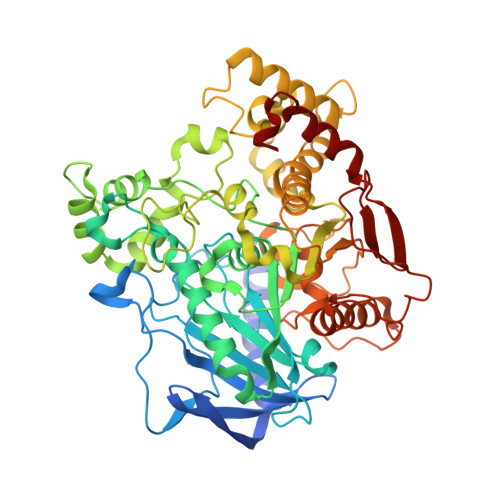Mapping the Accessible Conformational Landscape of an Insect Carboxylesterase Using Conformational Ensemble Analysis and Kinetic Crystallography.
Correy, G.J., Carr, P.D., Meirelles, T., Mabbitt, P.D., Fraser, N.J., Weik, M., Jackson, C.J.(2016) Structure 24: 977-987
- PubMed: 27210287
- DOI: https://doi.org/10.1016/j.str.2016.04.009
- Primary Citation of Related Structures:
4QWM, 4UBI, 4UBJ, 4UBK, 4UBL, 4UBM, 4UBN, 4UBO, 4W1P, 4W1Q, 4W1R, 4W1S, 5CH3, 5CH5, 5IVD, 5IVH, 5IVI, 5IVK - PubMed Abstract:
The proper function of enzymes often depends upon their efficient interconversion between particular conformational sub-states on a free-energy landscape. Experimentally characterizing these sub-states is challenging, which has limited our understanding of the role of protein dynamics in many enzymes. Here, we have used a combination of kinetic crystallography and detailed analysis of crystallographic protein ensembles to map the accessible conformational landscape of an insect carboxylesterase (LcαE7) as it traverses all steps in its catalytic cycle. LcαE7 is of special interest because of its evolving role in organophosphate insecticide resistance. Our results reveal that a dynamically coupled network of residues extends from the substrate-binding site to a surface loop. Interestingly, the coupling of this network that is apparent in the apoenzyme appears to be reduced in the phosphorylated enzyme intermediate. Altogether, the results of this work highlight the importance of protein dynamics to enzyme function and the evolution of new activity.
Organizational Affiliation:
Research School of Chemistry, Australian National University, Canberra, ACT 0200, Australia.















